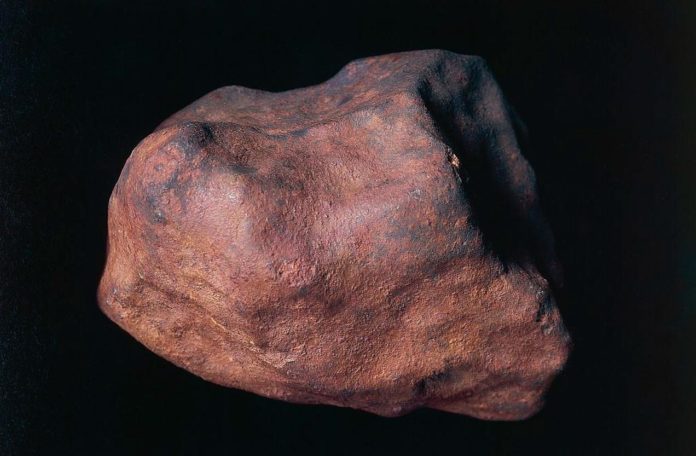A recent study shows that meteorite materials become porous and permeable, which researchers believe will affect their strength and proclivity for fragmentation.
Researchers from the University of Illinois Urbana-Champaign observed fragments of two meteors as they increased the temperature from room temperature to the temperature at which the meteor enters the Earth’s atmosphere, and made a significant discovery.
The vaporised iron sulphide leaves voids in the material, increasing its porosity. This data will enable predicting the weight of a meteor, its likelihood of fragmenting, and the subsequent damage assessment if it does land.
Francesco Panerai, a professor in the University of Illinois at Urbana-Department Champaign’s of Aerospace Engineering, stated:
“We extracted samples from the interiors that had not already been exposed to the high heat of the entry environment.
“We wanted to understand how the microstructure of a meteorite changes as it travels through the atmosphere.”
Panerai and coworkers at NASA Ames Research Center used an X-ray microtomography technique to observe and create three-dimensional images of the samples while they were heated to 2,200 degrees Fahrenheit. The experiments were conducted at Lawrence Berkeley National Laboratory’s synchrotron Advanced Light Source.
“The iron sulfide inside the meteorite vaporized as it heated. Some of the grains actually disappeared leaving large voids in the material,” Panerai said.
“We were surprised by this observation. The ability to look at the interior of the meteorite in 3D, while being heated, led us to discover a progressive increase of material porosity with heating. After that, we took cross-sections of the material and looked at the chemical composition to understand the phase that had been modified by the heating, changing its porosity.
“This discovery provides evidence that meteorite materials become porous and permeable, which we speculate will have an effect on its strength and propensity for fragmentation.”
Tamdakht meteorite was chosen as the case study because it is a meteorite that landed in a Moroccan desert a few years ago. However, the researchers wanted to confirm their findings, so they repeated experiments on tenham meteorite to determine whether a meteorite of a different composition would behave similarly. Both specimens were from the same type of meteorite called a chondrite, which is the most common type of meteorite found and is composed primarily of iron and nickel, which are both high-density elements.
“Both became porous, but the porosity that develops depends upon the content of the sulfides,” Panerai said.
“One of the two had higher iron sulfides, which is what evaporates. We found that the vaporizing of iron sulfides happens at mild entry temperatures. This is something that would happen, not at the external fusion crust of the meteorite where the temperature is a lot higher, but just underneath the surface.”
The research was driven by the potential threat meteorites pose to humans—the most egregious example being the Chelyabinsk meteor, which blasted through the Earth’s atmosphere over Russia in 2013 and injured approximately 1,500 people through indirect effects such as broken glass caused by the shock wave. Following that incident, NASA set up the Asteroid Threat Assessment Program to develop scientific tools to assist decision makers in assessing the threat posed by meteorites to the population.
“Most of the cosmic material burns away as it enters. The atmosphere protects us,” Panerai said. “But there are significant sized meteorites that can be harmful. For these larger objects that have a non-zero probability of hitting us, we need to have tools to predict what damage they would do if they would hit Earth. Based on these tools, we can predict how it enters the atmosphere, its size, how it behaves as it goes through the atmosphere, etc. so decision makers can take counter measures.”
Panerai stated that the Asteroid Threat Assessment Program is currently developing models to demonstrate the behavior of meteorites, which requires a large amount of data.
“We used machine learning for the data analysis because the amount of data to analyze is huge and we need efficient techniques.
“We are also using tools refined over the years for the design of hypersonic entry vehicle and transferring this knowledge to the study of meteoroids, the only hypersonic systems in nature, which is very exciting. This provides NASA with critical data on the microstructure and morphology of how a common meteorite behaves during heating, so that those features can be integrated in those models.”
This work was funded by NASA’s Planetary Defense Coordination
The findings were published in the Planetary Science Journal.
Photo of Tenham meteorite by DEA / C.BEVILACQUA/De Agostini via Getty Images
